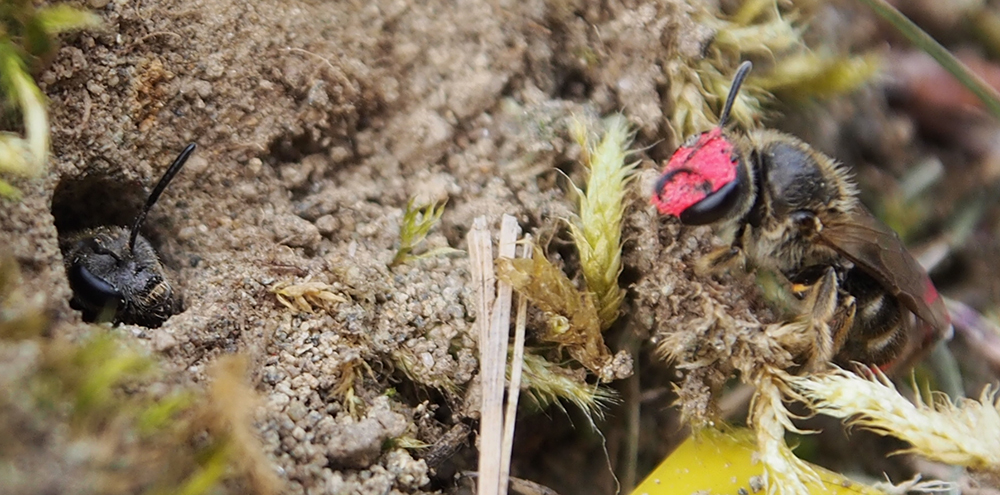
Cooperation in a society matters more than genetic relations
In eusocial species – organisms that are highly organized and have groups of infertile workers – altruism is a community trait that can help keep the group alive and fit. For many years, it has been thought that genetics and the level of relation between individuals was the most important factor for the evolution of altruistic social behavior in some organisms. Now, a new study from researchers at Hokkaido University has found that this is not the case.
An organism’s “fitness” is directly related to its ability to successfully reproduce and propagate its genes. In this study, researchers studied the foraging and nesting behaviors of the sweat bee (Lasioglossum baleicum), and found that the fitness was more strongly linked to the bees’ cooperative behavior than it was to their genetic similarity. This is the first empirical evidence to suggest that social behavior in eusocial species is only somewhat attributed to how related the individuals are to each other.
The results of this study go against earlier theories that linked altruistic selfless behavior in eusocial species to genetic relatedness and a desire to propagate their own genes. Past studies have found that, in some insect species, genetic similarity is higher between sisters than between a sister and its own offspring – this has been considered the key factor in the formation of a eusociety.
In their study, evolutionary biologist Eisuke Hasegawa and his colleagues studied five aggregations of sweat bee nests in a variety of areas on the island of Hokkaido in Japan. Each aggregation contained two types of nests: one in which multiple females worked together to care for the offspring of a single queen, and one in which a mother bee took care of her own offspring.
Observations found that the females working in cooperative nests foraged more often than females in solitary nests. Solitary nests were also devoid of adult females for a much larger amount of time than social nests, which leaves the nest vulnerable to predators. The main predator of sweat bees is the ant, which a solitary female sweat bee is able to fend off by plugging the nest opening with her head to protect it from scout ants. Cooperative nests are much more efficiently defended, as other females are able to defend the nest when one goes off to forage.
Individual females in social nests were found to have higher fitness than solitary females, which means that social bees are more successful in propagating their genes. The researchers found that 92 percent of the increase in fitness is a result of the benefits of grouping (i.e. more efficient foraging and defense). The other 8 percent is attributed to genetic similarity between individuals.
“There has been a decade-long debate among scientists as to whether genetic similarity or the benefit of grouping is the primary drive of sociality,” says Hasegawa. “Our study could help reveal some of the factors behind the evolution of cooperation, including among humans, by quantifying how much cooperative behavior contributes to the increased fitness of altruistic individuals in a group.”
—
By Connor Ertz, Earth.com Staff Writer
Image Credit: Norihiro Yagi













